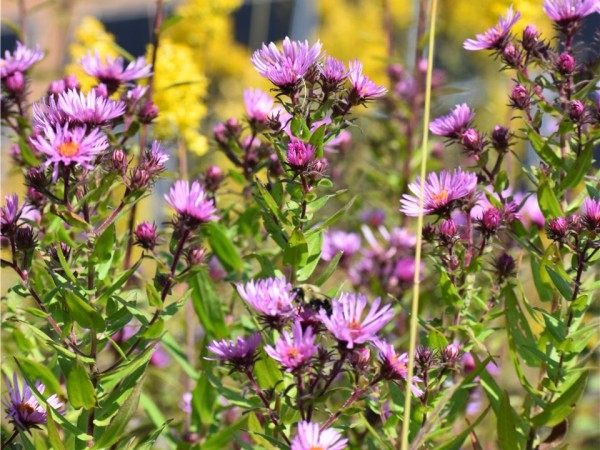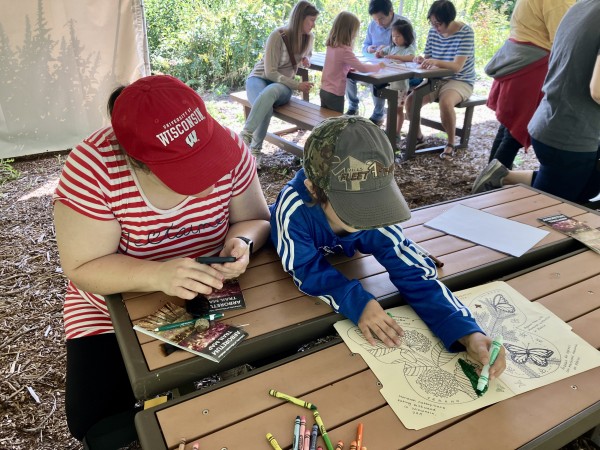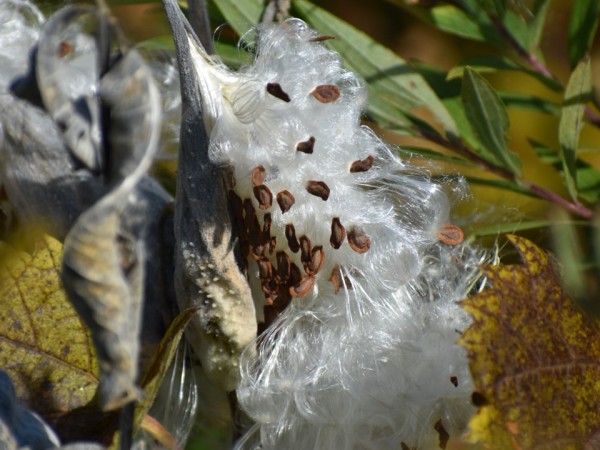Arboretum Family Nature Program:
Focus on the Symbolic Migration Project
Nestled in the heart of Madison, Wisconsin's vibrant capital, lies the University of Wisconsin–Madison Arboretum. Here, a thriving ecosystem teems with an array of fascinating wildlife and an impressive variety of plant life. It's not just a place; it's a hub of research, learning, and exploring. The UW Arboretum is also the institutional home of Journey North.
Imagine a place where you can immerse yourself in the beauty of wetlands, prairies, savannas, and lush deciduous and coniferous forests. Picture yourself traversing 20 miles of winding trails that lead you deeper into the heart of nature's secrets. This is what the Arboretum offers to the curious people who venture within its boundaries.
But it doesn't stop there. The Arboretum beckons families to join in on a captivating journey through the natural world. Every Sunday, all year round, the UW-Madison Arboretum hosts the Family Nature Program, which connects people and the wonders of the natural world. These programs are guided by Arboretum Naturalists who work throughout the seasons to welcome and educate Arboretum visitors by leading hikes, classes, and other activities on a wide variety of topics including ecological restoration, phenology, plants, animals, fungi, and history.
A recent early autumn Sunday was filled with the magic of monarch butterflies and their epic migration journey. The theme of the monthly Family Nature Program was "Mighty Migrations," and the weather couldn't have been more cooperative, with warm sunshine illuminating the gardens, prairies, and woodlands of the Arboretum.
Arboretum Naturalists led a spirited group of 25 parents, grandparents, and children on a search for early signs of fall. The adventure kicked off with a reading of Mighty Wings by Debbie Clement and Sarah Joy, a delightful storybook that unveils the unique life cycle and migratory patterns of the monarch butterfly. During the reading, one family excitedly spotted a monarch fluttering by, as if to confirm the story's enchantment.
Following the captivating tale, the group set out on a walk, observing blooming goldenrods, asters, and snakeroot, along with seeds forming on summer-blooming plants. Program participants marveled at milkweed pods, brimming with silvery threads, and even caught a glimpse of a few maple leaves beginning their colorful fall transformation.
After the nature walk, the group reconvened at an outdoor classroom to participate in the Symbolic Migration project. Participants decorated paper butterflies for the Symbolic Migration project. These artistic butterflies will soon embark on a symbolic journey of their own, destined for classrooms in Mexico. These paper monarchs represent the real odyssey of monarch butterflies, as real-life monarchs migrate to their overwintering sanctuaries in the Oyamel fir forest that grows in high-elevation mountains not far from Mexico City. In the spring, real-life monarch butterflies from Mexico will wing their way back, symbolizing the majestic return journey to breed in the United States and Canada.
Each family crafted life-sized butterflies to accompany a large Ambassador Butterfly as part of the Symbolic Migration project. The Arboretum’s Ambassador portrays monarch caterpillars feasting on milkweed in the summer in Wisconsin and roosting on Oyamel fir trees in the winter in Mexico. For a delightful take-home craft, each family created a monarch life cycle diagram using pipe cleaners, pasta shells, sticks, and paper. The participants couldn't help but express their awe at the thought that the monarch butterflies they observed here at the Arboretum would soon embark on a journey spanning thousands of miles to Mexico. Truly, monarchs are a marvel of the skies!
So, if you're looking for an adventure that combines nature's wonders with family fun, the Arboretum's Family Nature Program awaits your exploration. And, if you do not live in the Madison, Wisconsin area, you can still participate in the Symbolic Migration project.
Participate now to discover and celebrate the incredible journey of monarchs and a reminder that even the smallest creatures can undertake the mightiest migrations.





